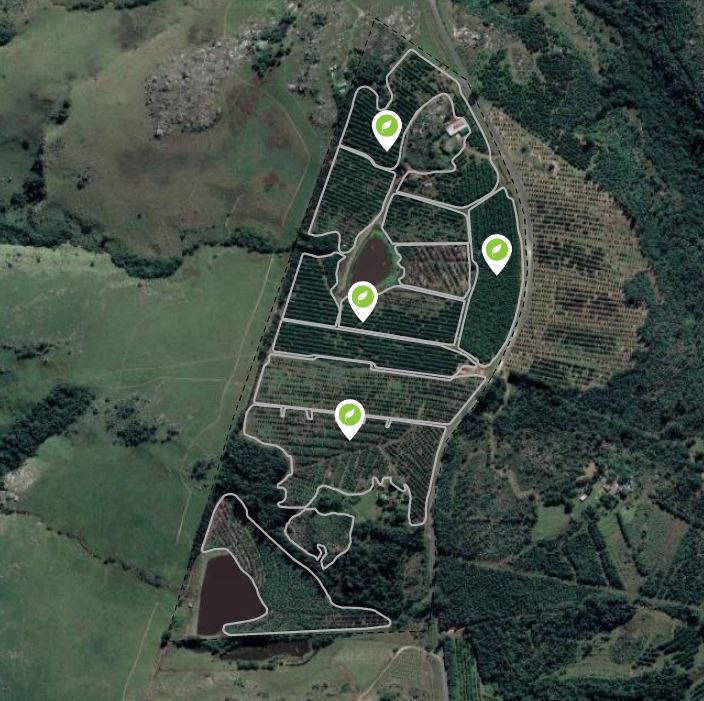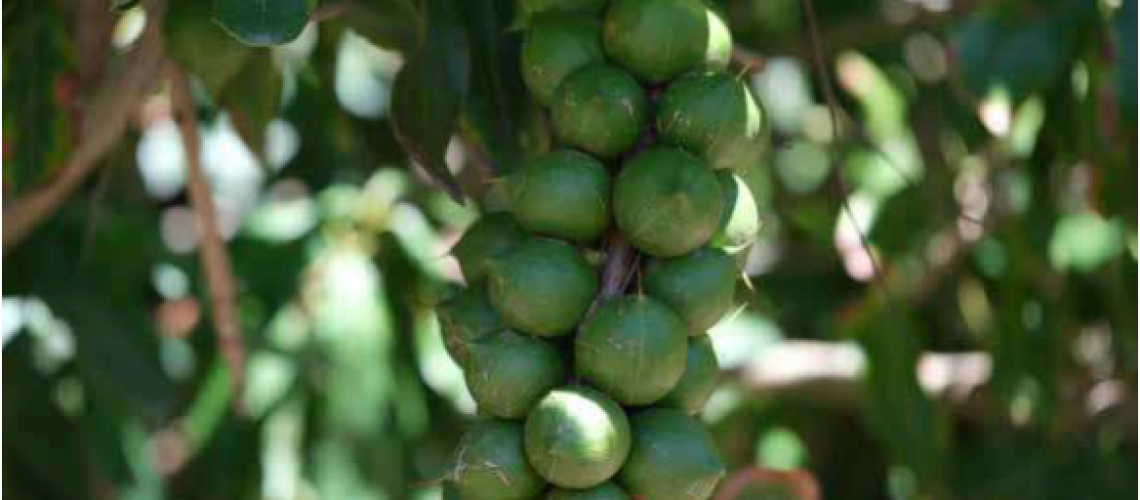SoluPHOS™ offers a solution for macadamia orchards that will suit your pocket
by Riaan Brummer, Senior Agronomist, Agri Technovation
Fertiliser prices necessitate effective application
With the current price of macadamia nuts, it is now more important than ever to get the best value from your fertiliser. Large amounts of fertiliser are repeatedly applied over the years, but not all of the applied fertiliser is necessarily absorbed by the tree. The result is that the full value anticipated and hoped for at the time of incurring the input cost, does not materialise. Several factors can influence the fixation of elements in the soil, thus their unavailability to the tree and therefore also the effectiveness of the fertiliser.
Due to the variation in fertiliser prices over the past two years, it is of great importance that the fertiliser actually in your soil, is in a plant available form for the tree to use it effectively. This way the full potential of the elements in the soil is exploited and unnecessary input costs are avoided.
Revive the soil
With this important need in mind, Agri Technovation developed the product SoluPHOS™ (M99), which, through the application of specific bacteria namely Pseudomonas fluorescens and Pseudomonas putida, makes the elements in the soil – mainly phosphate (P) and potassium (K) – available for uptake. Currently phosphate and potassium-containing products are among the most expensive fertiliser products on the market. Both these elements play a significant role in macadamia trees.
Through the use of SoluPHOS™ the elements can become available to the tree again, making it possible for farmers to reduce their P and K levels in a fertiliser programme, thereby cutting costs. In order to enjoy this benefit, it is important to know the status of the soil.
Importance of P and K in macadamias
Phosphate
Phosphate is not mobile in the soil and an only be taken up by a plant if it is present in the soil solution. Any energy processes taking place in the tree uses (and therefore requires) adenosine triphosphate (ATP) and although excess P could be harmful to macadamias, a P-deficiency could lead to poor flowering, poor nut set or heavy nut drop, which will certainly result in limited yields.
As part of the Proteacea-family, macadamia trees develop a and shallow root system with many root hairs forming a “carpet” under the tree, a so-called cluster. This cluster is very effective for absorption of minerals from the soil, in particular phosphate. Phosphate deficiencies, however, prevent the clusters from forming, which in turn leads to a reduced uptake of fertilisers.
Potassium
The prominent role performed by potassium in macadamia trees is well known. Potassium has a major impact on a tree’s carbohydrate levels and in the case of a K-deficiency, nut size and quality are directly adversely affected.
The revitalisation strategy
The recommended strategy to “revitalise” soils with the help of SoluPHOS™, is “measure and know”. It is essential to first conduct comprehensive soil and leaf analyses to determine where the elements are present in abundance in the soil and where fixation has occurred.
Step 1: Determine the soil-chemical status and implement an effective fertilisation plan
This can be achieved with precision services such as Agri Technovation’s ITEST™SOIL nutrient analysis, to determine the nutritional status of the soil and to compile an effective fertilisation plan for the season accordingly.

Figure 1: Example of an Agri Technovation ITEST™SOIL PBray 1 map showing the build-up of P in the soil from continued fertiliser applications over time.
Step 2: Do leaf analyses to determine the actual take up by the plant
Effective fertilisation can only occur if all the relevant parameters are taken into account by the farmer. Other than nutrient analyses, leaf analyses are yet another parameter to consider.
Two leaf samples can be taken annually to determine the tree’s actual take up, the results of which are then correlated with what is visually observed on the tree, including aspects such as vegetative growth and yield.

Figure 2: MYFARMWEB™ depiction of the GPS points where leaf samples were taken by Agri Technovation in October 2022

Figure 3: Results of Agri Technovation’s leaf analysis service ITEST™LEAF: Displays the l and indicates (per block) where levels were below the norm.
Step 3: Perform microbiological analyses
This analysis is done to determine the presence of phosphate mineralisation bacteria as well as the diversity of the soil microbiology. It can be performed as a precision service such as the soil health analysis (ITEST™MICROLIFE) offered by the Agri Technovation Microlife Research Centre (MRC). The SoluPHOS™ recommendation is then made according to this result, in combination with the results of other precision analyses conducted.
Step 4: Strategic application
An application of SoluPHOS™ is strategically recommended in spring (when root activity and temperatures increase) at 1L/ha.
Since SoluPHOS™ unlocks elements, it is applied in blocks with high P and K levels in the soil.
The time of application is of strategic importance as this is also the period during which a macadamia tree has a particular demand for P, before the start of the excessive flowering process during which large amounts of energy are consumed by the tree. A phosphate deficiency during this time could cause poor nut set or heavy nut drop.
In those areas where K-levels are already high in the soil (as determined by a soil chemical precision analysis), SoluPHOS™ applications will be beneficial to make the potassium that is already present in the soil, more plant available. SoluPHOS™ applications during periods when trees need large amounts of potassium could therefore bring a saving to the farmer’s pocket, because what has already been applied is just unlocked, instead of making further applications (more input costs).
Benefits of SoluPHOS™
- Organic phosphate and potassium are converted into a plant absorbable form.
- Increases the plant’s root volume.
- Improves water-, nitrogen (N) and potassium uptake.
- Ensures optimal plant growth and yields.
- Reduces the amount of accumulated P and K fertiliser in the soil.
- Contributes to the diversity in soil microbiology.
In a nutshell
The challenge for macadamia farmers is to continue farming economically at a time when nut prices have deteriorated while the cost of fertiliser fluctuates. The solution to the challenge lies once again in following a holistic approach. Additional or repeated fertiliser applications to orchards that already have many elements “in the (soil) bank”, will not necessarily be effective in terms of plant nutrition or from an economic point of view. The true solution lies therein to measure, to know and then to fertilise effectively. Effective (most economical) fertilisation includes ensuring that what has already been applied and therefore already in the soil, is optimally utilised before further input costs are incurred. SoluPHOS™ enables farmers to do this successfully.
SoluPHOS™ Reg nr. M99. Dangerous.

